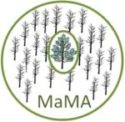This is an exciting time for the MaMA program in the Catskills, because of several recent developments that bring us closer to searching for lingering ash in the region and potentially collecting material from them for selective breeding. Here, we present the following materials, all tailored to the need of the Catskill region in using the MaMA program to enable long-term conservation and restoration of native ash:
- Overview and status update of MaMA in the Catskills
- MaMA’s Catskill Demonstration Plots: The lessons they teach us
- MaMA Catskills Action Map: Find the actions prioritized for each area in the region
Overview and status update of MaMA in the Catskills
The Ecological Research Institute (ERI) has been awarded funding by the Catskill Regional Invasive Species Partnership (CRISP) to implement its Monitoring and Managing Ash (MaMA) framework for ash conservation and EAB management throughout the region. Using this framework, the next few years will provide an especially promising opportunity to advance long-term ash conservation and restoration. This is due to the EAB-induced ash mortality in parts of the Catskill region now reaching levels that will enable detection of lingering ash – naturally occurring individuals (of all the native ash species) that remain healthy after EAB has killed almost all the ash in an area. The U.S. Forest Service has shown that material from these trees can be used in selective breeding to yield highly resistant, locally adapted native ash for conservation and restoration.
The MaMA approach relies upon widespread data collection by citizen scientists and natural resource managers to determine when areas are ready to be searched for lingering ash and also to search for and report these trees that provide so much promise (see which MaMA data project is right for you). Also, there are free recorded training webinars available for each of these at (see webinars). MaMA also includes guidelines for ash management that enhance the likelihood of finding lingering ash, while integrating this consideration into overall ash management strategies; therefore, if you are a land manager, we encourage you to implement this approach, even if you do not want to become involved in data reporting.
Based on data already gathered, especially from the MaMA Monitoring Plots Network in the region, we know that some areas in the Catskills are now ready to be searched for lingering ash. These areas have already met the criterion for lingering ash detection, in that they have already had ≥ 95% EAB-induced mortality of mature ash for at least two years. Thus, it is the areas where people have most likely given upon on ash, because the situation seems hopeless, that are actually the places to search for these trees that provide so much promise. These areas will continue to grow in the coming years providing expanded opportunities to find lingering ash. However, because the time window to find lingering ash in an area can close within a few years after the threshold is reached (because of various changes to the forest), it is best to aim to search areas as soon as possible, and each year move on to the areas that are newly ready to be searched.
We already know that the MaMA approach to finding lingering ash works, because it has already enabled the detection of over 20 such trees in the adjacent Lower Hudson Valley. Given the similar EAB invasion history of the Catskills, we anticipate that we should soon find lingering ash in this region as well – we just need enough searching effort!
Other developments also make this an especially promising time to participate in the MaMA program in the Catskills in order to advance ash conservation in the region. First, ERI is also now part of a team of institutions that will be funded to work together to counter threats posed by invasive forest pests not only to ash, but also other trees in the Northeast. We will be making a formal announcement regarding our participation in this initiative shortly. Through it, MaMA will not only be implemented more widely, but it will be explored as a possible model for approaches to conserving other trees. For MaMA itself, the benefits of this team approach include having partners who will be able to do selective breeding using scion collected from lingering ash in our region. Additionally, the institutional resources provided will enable us to improve our outreach, communication and coordination with all of you to better support your efforts on MaMA’s behalf. Second, we’ll soon be making available a new data-collection project, MaMA Rapid Ash Mortality Assessments, which will help fill information gaps between our monitoring plots.
To see the actions prioritized for each location within the Catskills, please look at our updated Catskill MaMA Action Map and how to use it. Also, to get a better understanding of the variation in EAB-induced ash decline and mortality in the region, and the insights that monitoring plots provide, please see this update on our four demonstration monitoring plots in the Catskills and the important insights that they provide.



